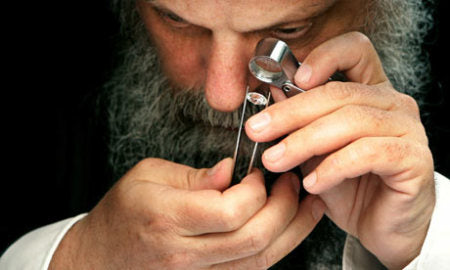
The weight of a diamond is measured in carats (ct). The term carat originates from the Greek word "keration", referring to the seeds of the carob tree, which grows in the Mediterranean region. These seeds were historically used to weigh precious gemstones because of their remarkably uniform size and weight, and the term has been carried over into the modern gemstone industry.
In standard units:
-
1 carat = 0.2 grams
-
1 carat = 100 points
Diamonds heavier than 1 carat are typically expressed in carats (e.g., 1.25 ct), while diamonds weighing less than 1 carat are often referred to by "points" (e.g., 0.25 ct = 25 points).
In general, the heavier a natural diamond is, the higher its price. However, the relationship between price and weight is not a simple linear one.
In diamond valuation, there’s an important concept called the carat premium. This refers to the sharp increase in price that occurs when a diamond reaches a key milestone weight—typically a full-carat mark (such as 0.50 ct, 1.00 ct, 1.50 ct, etc.). These weight thresholds trigger a step-like price jump, even if the increase in weight is minimal. This phenomenon is what’s known as the carat premium.

Let’s take an example:
Two diamonds with the same specifications—D color, IF clarity, and the same cut grade.
-
One weighs 0.99 carats, priced internationally at $15,500 per carat.
-
The other weighs 1.00 carat, priced at $27,500 per carat.
Now let’s calculate:
-
0.99 ct × $15,500 = $15,345
-
1.00 ct × $27,500 = $27,500
The difference in weight is just 0.01 carat, but the price difference is a staggering $12,155!
For most consumers who don’t handle diamonds often, it’s hard to have an intuitive understanding of how weight translates to visual size. So, how big do diamonds of different carat weights actually look when worn?
The image below illustrates the appearance of round diamonds of various weights when worn on the finger:






